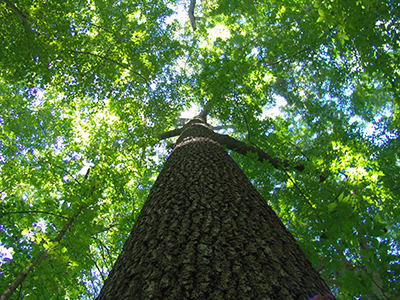
Red Oaks and the American Revolution

Southern Red Oak Forest: One of the Five Best Preserved Areas in the Crum Woods
This President’s Day, I am reminded of history found in the Southern Red Oak Forest section of the Crum Woods. While this section of the woods is one of the five unique locations prominent for their excellent state of preservation (the Wister Forest, Martin Forest, Trillium Slope, Skunk-Cabbage Hollow, and the Southern Red Oak Forest), it also has an interesting history of human use.
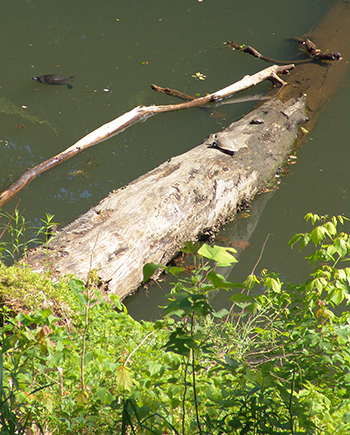
Turtles caught sunbathing along the Crum Creek. photo credit: R. Robert
As you hike along the trail, you will discover amazing native plants recovering from the formerly-high deer pressure, and odd man-made additions. You may notice the remains of an old powder mill, which was in use during the American Revolution.
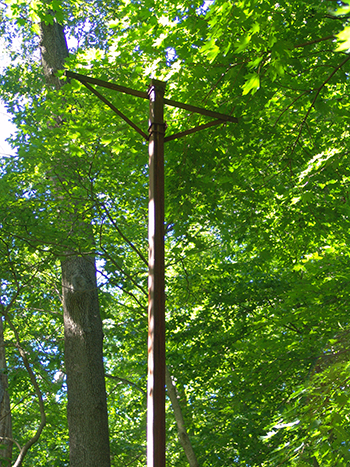
We believe these were the poles for the power lines when, in the 1920s, the college supplied its own power from the dam. photo credit: R. Robert
If you look up during your exploration, you may see odd man-made poles along the trail. We believe these were the poles for the power lines when, in the 1920s, the college supplied its own power from the dam.
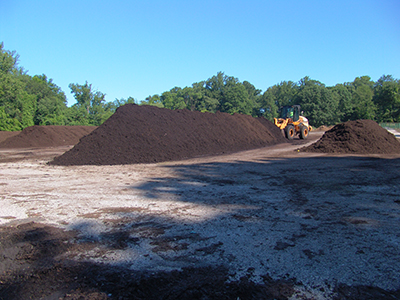
This portion of the 200-acre Crum Woods encircles the township/college leaf mulch processing center located off of Avondale Road near the entrance to the Smedley-Leiper Trail. photo credit: R. Robert
This portion of the 200-acre Crum Woods encircles the township/college leaf mulch processing center located off of Avondale Road near the entrance to the Smedley-Leiper Trail. This site has ecological importance: the endangered native southern red oak, Quercus falcata, has five mature specimens towering over the forest canopy here.
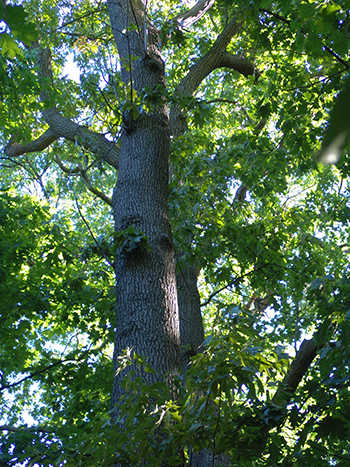
Various native oaks grace this part of the Crum Woods. photo credit: R. Robert
This native tree species has reddish brown fall color and produces acorns biennially, providing food for wildlife as well as nesting sites and shelter. It also serves as a larval host for butterflies and moths. Commercially, the lumber is used for construction and furniture.
Growing alongside the southern red oak is the fellow native Querucs velutina, black oak. Black oaks attract songbirds, ground birds, and mammals by providing a food source, acorns.
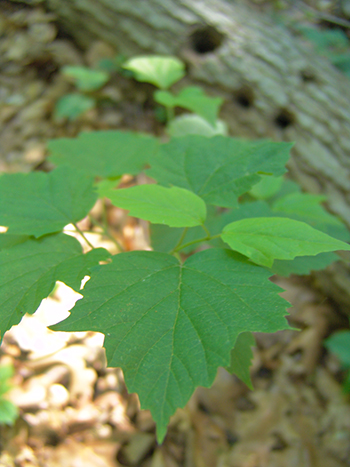
At about boot height in this region of the Crum Woods, you will see the resurgence of the once-dominate maple leaf viburnum, Viburnum acerifolium. photo credit: R. Robert
At about boot height in this region of the Crum Woods, you will see the resurgence of the once-dominate maple leaf viburnum, Viburnum acerifolium. A generation ago, our eastern forests were dominated by this native shrub with aspiring botanists acing their botany quizzes because it was a prolific, easy to identify plant in the woods.
This native, like most viburnums, produces attractive, conspicuous flowers and berries. The flowers are recognized by pollination ecologists as attracting large numbers of native bees. The berries are a source of food for birds and mammals.
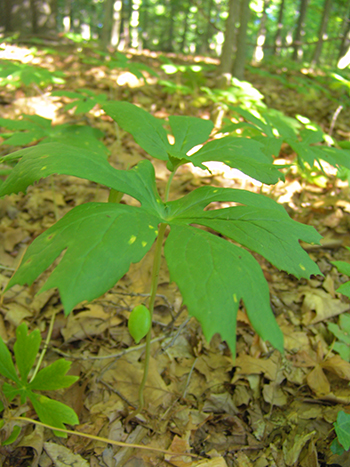
Mayapples grace the under-story in this region of the Crum Woods. photo credit: R. Robert
Mike Rolli, our former Crum Woods specialist, attributed the revival of this ecologically important shrub to the deer cull which suppressed over-browsing in the Crum Woods.
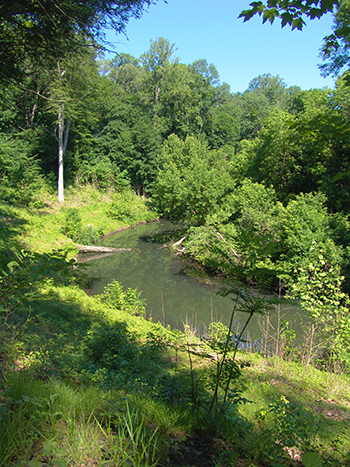
Crum Creek flows peaceful through the woods. photo credit: R. Robert
Take a winter walk to explore history and native ecology resurging in this area of the Crum Woods.
_______________________________________________________________________________________________________________________________
This article is part of an ongoing column called the Crum Woods Chronicle. The Crum Woods Chronicle will be periodic updates and observations about subjects related to natural history, interesting species found in and around the Crum Woods, and exciting events you can get involved in. My hope is that some of these topics will interest you, strengthen your connection to the Crum Woods, and inspire you to explore your backyard a little more often.
Natural areas do not maintain their character and quality independently, especially when they are heavily used by people and embedded in urban environments. Educating yourself about aspects of the Crum Woods that interest you and understanding how your individual use of the Crum Woods impacts it (and how you can reduce that impact!) are important steps every one of us should take.
“In the end we will conserve only what we love; we will love only what we understand; and we will understand only what we are taught.” –Baba Dioum





No Comments